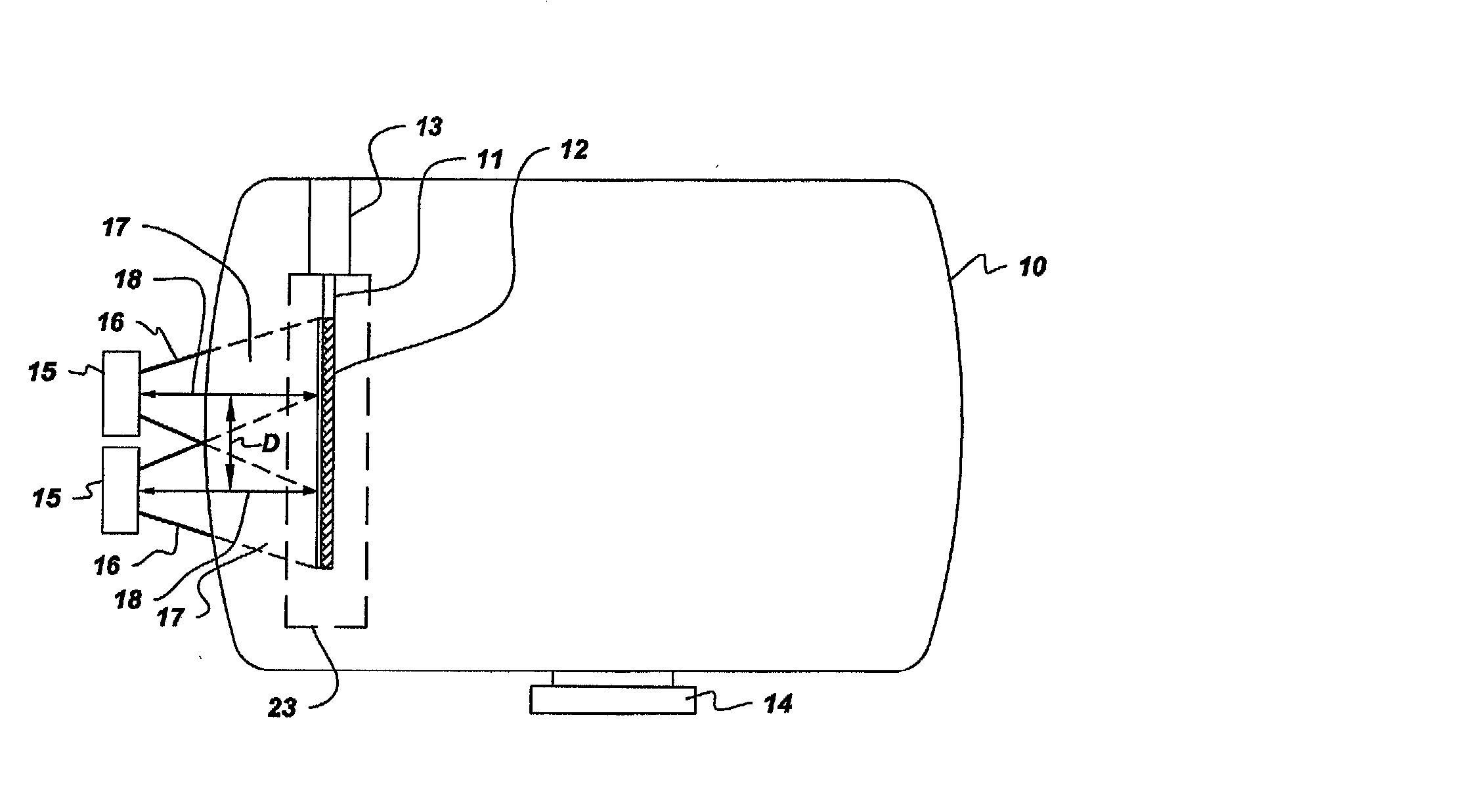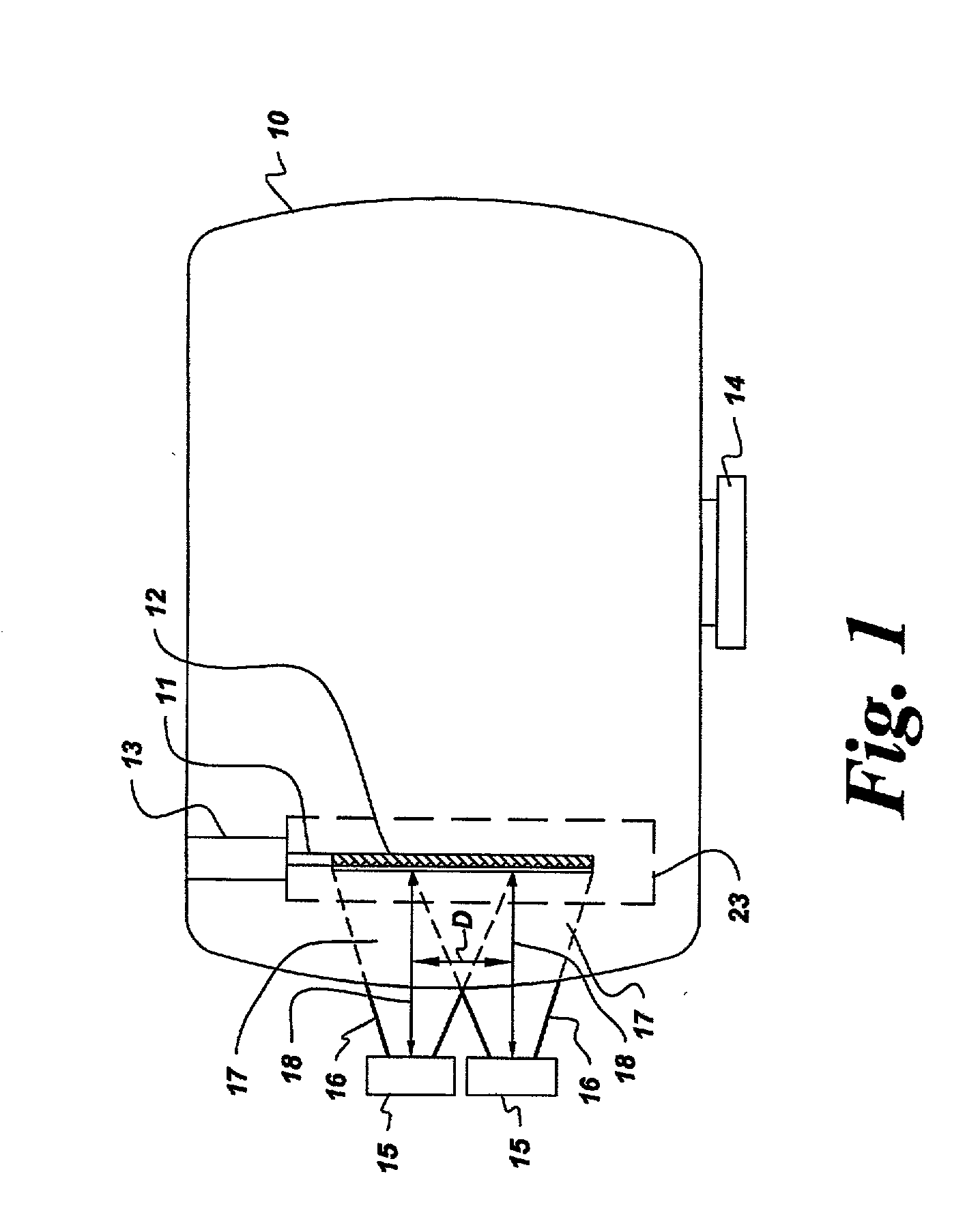Apparatus and method for large area chemical vapor deposition using multiple expanding thermal plasma generators
a technology of thermal plasma generator and large area, applied in the direction of chemical vapor deposition coating, coating, plasma technique, etc., can solve the problems of inability to efficiently produce a coating, system is incapable of coating a single surface of, for example, a planar substrate, and its operating parameters, such as arc-to-arc spacing, arc-to-substrat distance, and deposition pressure, are not adapted to etp deposition, etc., to achieve efficien
- Summary
- Abstract
- Description
- Claims
- Application Information
AI Technical Summary
Benefits of technology
Problems solved by technology
Method used
Image
Examples
example 2
[0058] The procedure of Example 1 was repeated, except that a curved substrate, adapted for use as an automobile window, was employed. The increase in Taber haze was measured at the centers of each side of five 10.times.10-cm sections of the substrate. The average increase was 2.7% with a standard deviation of 0.4%. Thus, the method of the invention was shown to be effective on curved as well as flat substrates.
example 3
[0059] The procedure of Example 1 was repeated, except that an array of three ETP generating means, arranged in a zigzag configuration, was employed. The ETP generating means were arranged so that the vertical distance between the centers of the plasma plumes was 15 cm and the horizontal distance was about 26 cm. A retractable shutter having an aperture 20 cm wide was placed between the ETP generating means and the substrate.
[0060] Coating thicknesses and Taber haze increases were measured as in Example 1 Thicknesses were 4.1 micron in average with a standard deviation of 0.4 micron. The average Taber haze increase was 1.9% with a standard deviation of 0.3%.
example 4
[0061] The procedure of Example 3 was repeated, with the exception that a curved substrate, adapted for use as an automobile window, was employed. The average Taber haze increase was 2.3% with a standard deviation of 0.5%.
PUM
| Property | Measurement | Unit |
|---|---|---|
| angle | aaaaa | aaaaa |
| distance | aaaaa | aaaaa |
| distance | aaaaa | aaaaa |
Abstract
Description
Claims
Application Information
 Login to View More
Login to View More - R&D
- Intellectual Property
- Life Sciences
- Materials
- Tech Scout
- Unparalleled Data Quality
- Higher Quality Content
- 60% Fewer Hallucinations
Browse by: Latest US Patents, China's latest patents, Technical Efficacy Thesaurus, Application Domain, Technology Topic, Popular Technical Reports.
© 2025 PatSnap. All rights reserved.Legal|Privacy policy|Modern Slavery Act Transparency Statement|Sitemap|About US| Contact US: help@patsnap.com



